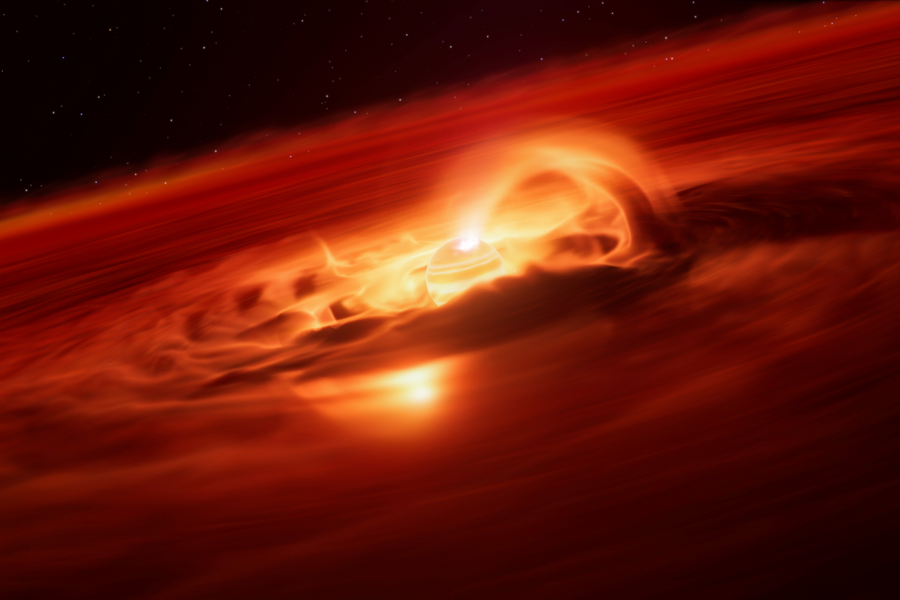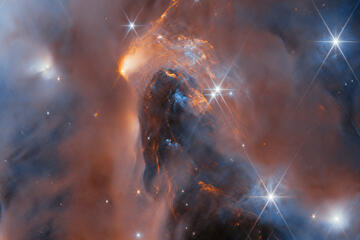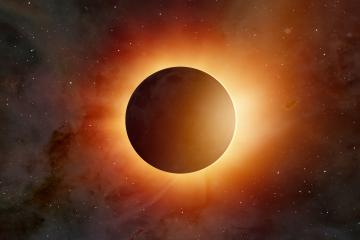- Name
- Hannah Robbins
- hlrobbins@jhu.edu
- Cell phone
- 667-232-9047
A young rogue planet about 620 light-years away from Earth has experienced a record-breaking "growth spurt," hoovering up some six billion tons of gas and dust each second over a couple of months.
A team of international researchers has explored changes in the planet's growth and immediate surroundings. The observations provide insight into how rogue planets—free-floating planetary-mass objects that do not orbit stars—behave and grow in their infancy.
Key Takeaways
- A young rogue planet about 620 light-years away was observed growing at a record-breaking pace
- As it grew, the planet consumed gas and dust from its surroundings, with a peak growth rate of up to six billion tons per second
- The planet's magnetic field played an important role in pulling in nearby material, as it does in young stars
"We've caught this newborn rogue planet in the act of gobbling up stuff at a furious pace," said JHU Provost Ray Jayawardhana, senior co-author and a professor in the Department of Physics and Astronomy. "Monitoring its behavior over the past few months, with two of the most powerful telescopes on the ground and in space, we have captured a rare glimpse into the baby phase of isolated objects not much heftier than Jupiter."
Jayawardhana added: "Their infancy appears to be much more tumultuous than we had realized."
The findings were accepted for publication in The Astrophysical Journal Letters and are available online.
Located in the Chamaeleon constellation, the rogue planet Cha 1107-7626 is five to 10 times the mass of Jupiter. Like a young star, the planet is surrounded by a disk of dust and gas. When material from the disk spirals onto the central object, it grows through a process called accretion.
Observations taken with the European Southern Observatory's Very Large Telescope revealed how rapidly the rogue planet was accreting material. At its peak in August, the planet's growth rate had shot up to six billion tons per second, about eight times greater than in the months prior.
"This is the strongest accretion episode ever recorded in a planetary-mass object," said lead author Víctor Almendros-Abad, an astronomer at the Palermo Astronomical Observatory of the National Institute for Astrophysics in Italy. "People may think of planets as quiet and stable worlds, but with this discovery we see that planetary-mass objects freely floating in space can be exciting places."
Researchers found the planet's magnetic field plays an important role in channelling material from the disk's inner edge, as it does in young stars. Data from the James Webb Space Telescope, a powerful observatory that can gather longer infrared wavelengths, showed the chemistry of the disk had changed. Water vapor was present during the growth spurt but not before.
"We're struck by quite how much the infancy of free-floating planetary-mass objects resembles that of stars like the sun," Jayawardhana said. "Our new findings underscore that similarity and imply that some objects comparable to giant planets form the way stars do, from contracting clouds of gas and dust accompanied by disks of their own, and they go through growth episodes just like newborn stars."
Posted in Science+Technology
Tagged astrophysics, planetary science, webb











